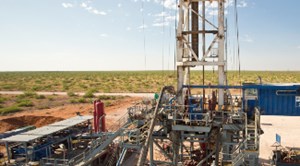US sees oil growth slowing in 2023, falling short of record
(Bloomberg) – The US slashed its forecast for 2023 oil production in the latest sign that world crude markets can’t rely on American shale fields to ramp up supply quickly enough to reduce high energy prices over the next year.
Production is now estimated to hit 12.31 million barrels a day in 2023, according to a monthly report from the Energy Information Administration released Tuesday, a fifth straight downward revision by the government agency. Next year’s output was previously expected to surpass the record 12.315 million barrels set in 2019.
The projection suggests the pace of US shale growth, one of the few sources of major new supply in recent year, is slowing despite oil prices hovering at around $90 a barrel, about double most domestic producers’ breakeven costs. If the trend continues, it would deprive the global market of additional barrels to help make up for OPEC+ production cuts and disruption to Russian supplies amid its invasion of Ukraine.
The EIA’s view, coming the same day that the US votes in midterm elections, is also a likely blow to President Joe Biden. He has repeatedly called on oil companies to use record profits to increase supply and help bring down fuel prices. Biden last week threatened the industry with a tax on windfall profits unless they increase investment.
The previous boom in US shale production fostered an era of relatively cheap energy costs. It added more crude to global markets than the entire production of Iraq and Iran combined from 2012 to 2020, transforming the country into the biggest producer of both oil and gas.
But the rebound in US production following the initial onslaught of Covid-19 has been lackluster. The EIA said Tuesday that output this year will average 11.83 million barrels a day. While that represents the first increase in its estimate since June, it means domestic output is still about 10% below the level seen back in February 2020, the month before the pandemic triggered a collapse in demand and widespread cuts to production.
U.S. shale producers have cited rising costs as one reason for slow growth. Executives speaking on earnings conference calls over the past week have warned of the impact of supply-chain constraints. Limited supplies of labor and equipment are “dictating the pace of the industry” right now, Ryan Lance, the chief executive officer of US oil producer ConocoPhillips, said Nov. 3.
Rocketing inflation for oilfield items such as pipes, steel casing and frack sand is weighing on producers. The number of rigs drilling for crude in the US has climbed at a slower pace since July, while the inventory of drilled-but-uncompleted wells that swelled during the height of the pandemic is now largely used up.
But the biggest factor behind the slowdown in growth is shale companies’ commitment to profits over production, a major reversal from the preceding decade when they increased output at almost any cost.
“The majority of those companies are drilling and investing in a way that’s more disciplined than what was in favor prior to the pandemic,” EOG Resources Inc. CEO Ezra Yacob said last week.
The new shale business model is good for shareholders, with US oil and gas stocks trading at record highs and companies spending billions of dollars on share buybacks and dividends. But it’s stoking tensions with the White House, which this year has repeatedly implored the industry to boost production.
“Capital discipline will be the main constraint on production,” said Hunter Kornfeind, an oil-market analyst at Rapidan Energy Group. “There is risk to the downside, due to inflationary pressure and more so capital discipline. I don’t see that this will subside next year.”



